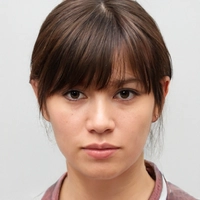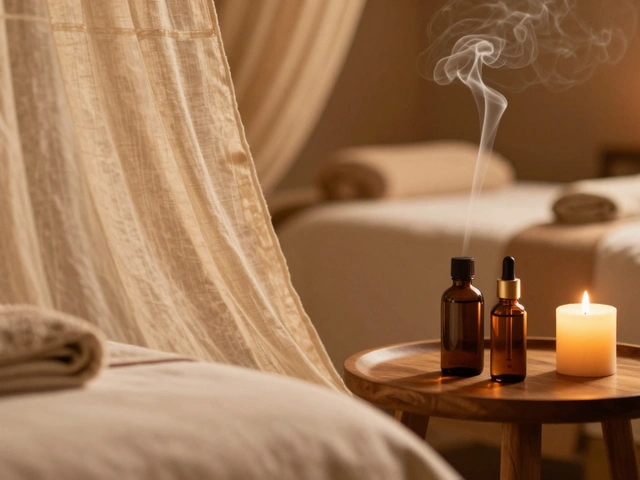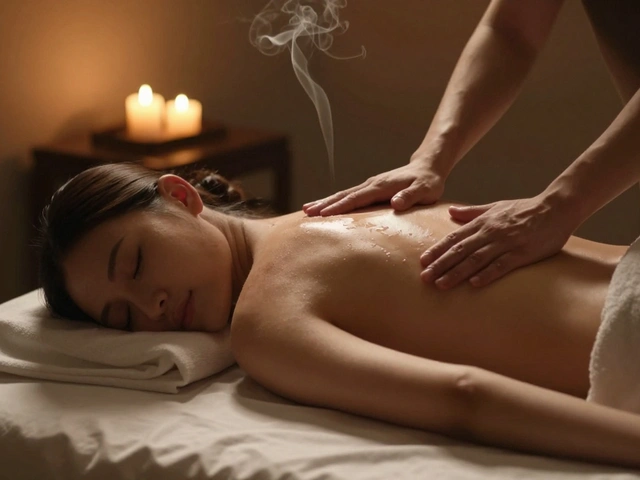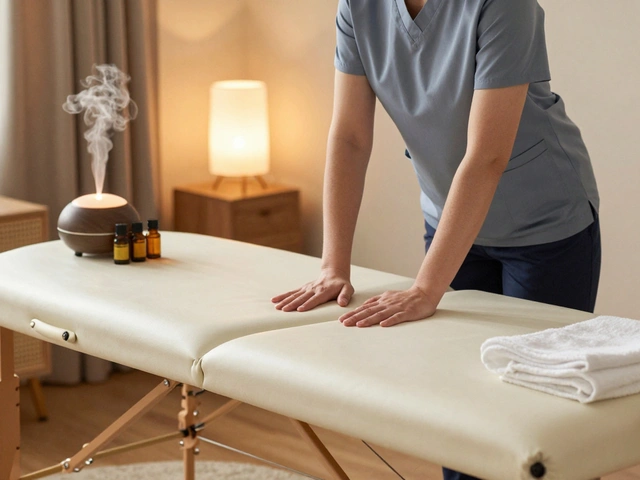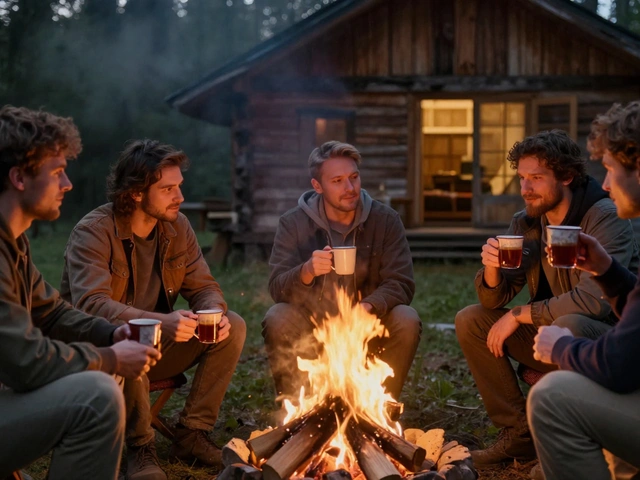Thai Massage History: Unpacking Traditions and Secrets

If you think Thai massage is just stretching and cracking joints, there’s way more to it than that. This practice goes way back—some say over 2,500 years. It started as a blend of yoga movements, mindful touch, and herbal wisdom, passed down from monks and healers in Thai temples. The origins are actually a bit of a mystery, but most stories link it to Jivaka Kumar Bhaccha, a key figure in ancient medicine who was supposedly Buddha’s doctor.
What makes Thai massage stand out? It’s all about movement and flow—it mixes deep pressure with gentle stretches, usually done on a comfy mat, not a massage table. You keep your clothes on, and the therapist may use elbows, feet, and even knees to work those tight muscles. This style isn’t just about relaxation; it’s used to boost energy, improve flexibility, and even help with headaches and back pain.
- Where Thai Massage Began
- Traditional Techniques and Skills
- Cultural Rituals and Beliefs
- Modern Thai Massage: What to Expect
Where Thai Massage Began
Let’s clear up the basics first: Thai massage didn’t just pop up overnight. Its story probably started around 500 B.C. in what is now modern-day Thailand. The country didn’t exist in its current form back then, but people in the region were already blending influences from India, China, and even local healing traditions.
The key figure you’ll always hear about is Jivaka Kumar Bhaccha. He was an actual historical person—and backstage legend in Thai medicine. He was known as the doctor of the Buddha and is still honored by Thai massage therapists with chants before treatments. Some sources connect his teachings to Ayurveda from India, and there’s clear overlap with yoga and Chinese meridian theories too.
What’s interesting is how the knowledge spread. Traditional Thai massage was taught in temples, especially famous ones like Wat Pho in Bangkok. This temple still runs one of the best-known Thai massage schools today.
- Thai massage came from a mix of Indian, Chinese, and Southeast Asian healing practices.
- Monks and lay healers passed on the skills through hands-on practice, not written books.
- Wat Pho Temple in Bangkok, still open now, is the original school where knowledge is formalized and shared worldwide.
Want some specifics? Here’s a table showing key milestones in Thai massage history:
| Year | Event |
|---|---|
| c. 500 B.C. | Jivaka Kumar Bhaccha practices in northern India |
| 13th century | Earliest evidence of massage used in early Thai kingdoms |
| 1832 | Wat Pho Temple opens first formal Thai massage school |
| 1955 | First written curriculum for Thai massage created in Thailand |
| Present | Thai massage practiced and taught worldwide |
This foundation is why Thai Massage stays so strongly tied to its roots. Even today, every real practitioner knows the legend of Jivaka and keeps those temple traditions alive—no matter where they work in the world.
Traditional Techniques and Skills
So, what actually happens during a real Thai massage? It’s not like your usual oil rubdown. Instead, this practice uses a bunch of different moves: stretching, rocking, deep rhythmic pressure, and thumb pressing along what are called “Sen” lines (kind of like energy highways in the body). Therapists don’t just use hands—they use fingers, forearms, elbows, knees, and even their feet. It looks like a mix of assisted yoga and acupressure. You don’t have to do anything except relax and let the pro do the work.
Let’s break down some core techniques you’ll see in authentic sessions:
- Thai Massage always starts with gentle palming and thumb presses to warm up muscles. This sets the stage for deeper stretches.
- Therapists follow specific paths called Sen lines. They believe working these lines can help unblock energy and boost wellness. There are 10 main Sen lines most practitioners use.
- Passive stretching is a huge deal—think of it as lazy yoga. The therapist moves your arms, legs, and spine into light stretches, which can help relieve tension and improve mobility.
- Bodyweight leverage: The therapist might use their whole body to apply firm, even pressure. Don’t be surprised if they climb on the mat to get the angle just right.
Want to know how long a typical session lasts? Most are between 60 to 120 minutes. Here’s a quick look at the different pressures and tools used during Thai massage:
| Technique | Pressure Level | Body Part Used |
|---|---|---|
| Palming | Light to Moderate | Palm, Fingers |
| Thumb Pressing | Deep | Thumbs |
| Rolling | Moderate | Forearm |
| Knee or Elbow Press | Deep | Knee, Elbow |
| Foot Stretch | Varies | Feet |
Here’s a tip: if something hurts, always let your therapist know. Skilled practitioners can adjust techniques to be softer or stronger. They’re trained to read the body’s response, but your feedback helps a ton. And if you’re curious, many therapists in Thailand have at least 372 hours of official training before they’re allowed to work professionally. Pretty serious, right?
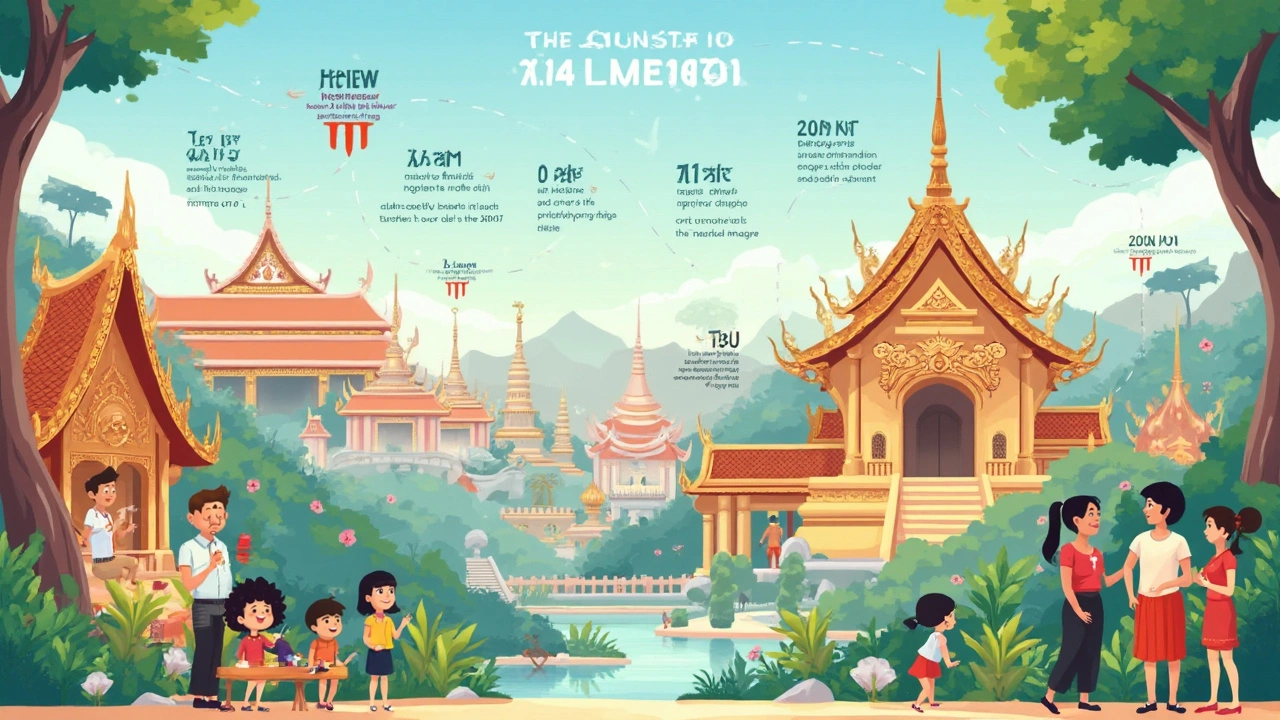
Cultural Rituals and Beliefs
Thai massage isn’t just about physical touch—there’s a whole world of meaning and tradition under the surface. Before a session starts, many Thai therapists take a moment to practice the wai khru ritual. This involves a bow or prayer to honor their teachers and the legendary founder, Jivaka Kumar Bhaccha. It’s more than a habit; it shows respect for the knowledge and the craft passed down through generations.
What’s interesting is how Thai massage gets linked to the body’s energy lines, or "sen". Practitioners believe that these lines are invisible pathways for vital energy. When energy gets blocked, you might feel tired, stressed, or stiff. So, a big part of Thai massage is pressing and stretching along the sen lines to get things flowing again. This idea is borrowed from both Ayurvedic and Chinese medicine, blending two big traditions into one unique approach.
Therapists also pay attention to the atmosphere. You’ll often find rooms with soft light, gentle music, and even traditional herbs burning. Smells like lemongrass or camphor aren’t just for show—they’re believed to calm the mind and prep the body for healing.
| Ritual | Purpose |
|---|---|
| Wai Khru | Shows respect for teachers and ancestors |
| Use of Herbal Compress | Reduces muscle tension, aids relaxation |
| Chanting | Creates a calm and healing environment |
| Focusing on Sen Lines | Restores energy flow |
If you’re getting a Thai Massage in Thailand—and sometimes even abroad—you may notice therapists start and end sessions with a quiet pause or short prayer. These small but meaningful moments tie every massage back to centuries of healing wisdom. If you want to experience the full tradition, ask about herbal compresses or energy work during your session—many therapists love to share these local secrets.
Modern Thai Massage: What to Expect
Walking into a Thai massage studio today, you’ll probably see a floor lined with soft mats, calming music in the background, and therapists wearing loose, comfy clothing. The vibe is way more relaxed than most Western spas. These days, Thai Massage often sticks to its roots—no oils or lotions, and you stay fully dressed in stretchy pants and a top they hand out. The typical session lasts about 60 to 120 minutes, but don’t be surprised if you spot options for express 30-minute or even massive 3-hour sessions.
Every therapist brings their own style. Some are super gentle, while others use their full body weight to dig into sore spots. Expect moves that twist, pull, and stretch your body in ways you probably haven’t tried before. The goal here isn’t just to chill you out—it’s about boosting flexibility, loosening tight muscles, and getting energy flowing throughout the body. Therapists often press, squeeze, or walk along your legs and back. Some places even offer couples sessions so two people can try it at once.
Worried it’ll hurt? It shouldn’t. You’re always encouraged to speak up if a stretch feels too intense. Therapists appreciate feedback and actually expect you to tell them what hurts or feels great. A good tip—try not to eat a huge meal before your appointment, and wear clothes that are easy to move in (skip the jeans, trust me).
If you’re curious about quality and price, here’s what sessions typically look like in Thailand and elsewhere:
| Session Length | Average Price in Thailand | Average Price Internationally |
|---|---|---|
| 30 min | 200-400 THB (approx $6-12 USD) | $35-60 USD |
| 60 min | 300-600 THB (approx $9-18 USD) | $60-120 USD |
| 120 min | 500-1000 THB (approx $15-30 USD) | $100-200 USD |
More and more spas offer signature blends where traditional Thai methods mix with oils, aromatherapy, or hot stones. Just check the menu—if you want classic, look for the words “traditional Thai massage.”
- Remember to hydrate after your session.
- If it’s your first time, start with 60 minutes and work your way up.
- Not all therapists are certified—ask about their experience for better results.
Bottom line, modern Thai massage keeps old-school techniques but adds extras for comfort and convenience. Don’t worry about awkward moments—a good spa will guide you through the whole process, so you can focus on feeling better.
